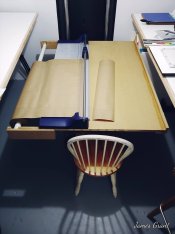Hello everyone!
Hope you are all well.
I have a question on large dimension color negative paper printing.
I've searched a long time ago extensively and I started searching again today.
In terms of dimensions, I hope to use the RA4 paper to print at 24"x32" (poster size) in my future darkroom.
Here is a list of different solutions, but I was hoping people could
share their opinion on which way would be the ideal method:
DEVILLE Bobinoir roller system
Custom Large Trays
Two pool noodles and two people roll back and forth
Wall Paper tray - rolling back and forth in a tray (1 person)
Some sort of tabletop/roller processor
Additionally, I was wondering if anyone thinks
a DIY or home made JOBO tank style paper processor would be a cheap and effective method.
We had an RA4 machine back in school years ago but
I don't know what the right solution for me is.
I'm hoping I will be shooting and printing a lot but not sure
what sort of volume we are talking about.
Well, thanks for reading this!
I hope you all stay well.
Best Regards,
Kevin H.
Hope you are all well.
I have a question on large dimension color negative paper printing.
I've searched a long time ago extensively and I started searching again today.
In terms of dimensions, I hope to use the RA4 paper to print at 24"x32" (poster size) in my future darkroom.
Here is a list of different solutions, but I was hoping people could
share their opinion on which way would be the ideal method:
DEVILLE Bobinoir roller system
Custom Large Trays
Two pool noodles and two people roll back and forth
Wall Paper tray - rolling back and forth in a tray (1 person)
Some sort of tabletop/roller processor
Additionally, I was wondering if anyone thinks
a DIY or home made JOBO tank style paper processor would be a cheap and effective method.
We had an RA4 machine back in school years ago but
I don't know what the right solution for me is.
I'm hoping I will be shooting and printing a lot but not sure
what sort of volume we are talking about.
Well, thanks for reading this!
I hope you all stay well.
Best Regards,
Kevin H.





 hahha
hahha